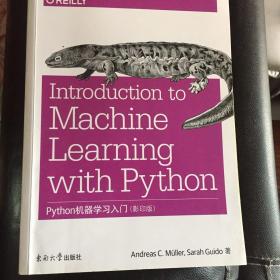
Python机器学习入门(影印版 英文版)
¥ 30 3.4折 ¥ 89 全新
仅1件
广东深圳
认证卖家担保交易快速发货售后保障
作者[美]安德烈亚斯·穆勒、莎拉·圭多 著
出版社东南大学出版社
出版时间2017-01
版次1
装帧平装
上书时间2021-10-05
- 在售商品 暂无
- 平均发货时间 暂无
- 好评率 暂无
- 最新上架
商品详情
- 品相描述:全新
图书标准信息
- 作者 [美]安德烈亚斯·穆勒、莎拉·圭多 著
- 出版社 东南大学出版社
- 出版时间 2017-01
- 版次 1
- ISBN 9787564169060
- 定价 89.00元
- 装帧 平装
- 开本 16开
- 纸张 胶版纸
- 页数 376页
- 字数 480千字
- 正文语种 英语
- 【内容简介】
-
机器学习已经成为许多商业应用和研究项目的一个组成部分,同时拥有广泛研究团队的大型公司也投入到这个领域。如果你使用Python,即使是初学者,《Python机器学习入门(影印版 英文版)》也将教你如何构建自己的机器学习解决方案。有了目前可用的丰富数据,机器学习应用程序只受限于你的想象力。
你将学习使用Python和scikit-learn库所需的全部步骤来创建成功的机器学习应用程序。《Python机器学习入门(影印版 英文版)》作者安德烈亚斯·穆勒、莎拉·圭多专注于使用机器学习算法的实践方面,而不会过多讨论其背后的数学原理。熟悉NumPy和matplotlib库将有助于你从《Python机器学习入门(影印版 英文版)》中获得*多信息。
有了《Python机器学习入门(影印版 英文版)》,你会学到:机器学习的基本概念和应用程序各种广泛使用的机器学习算法的优点和缺点如何呈现通过机器学习处理后的数据,包括需要关注的数据方面于模型评估和参数调整的**方法用于连接模型和封装工作流的管道的概念处理文本数据的方法,包括特定于文本的处理技术改善你的机器学习和数据科学技能的建议 - 【作者简介】
- AndreasMuller,在波恩大学的机器学习专业获得博士学位。在担任计算机视觉应用的机器学习研究员后,他加入了纽约大学数据科学中心:他也是scikit-learn维护者和核心贡献者。SarahGuido,是一位数据科学家,与许多创业公司有密切合作,近担任Bitly的首席数据科学家。Sarah获得密歇根大学信息科学硕士学位,在多个学术会议上成功地发表了演讲。
- 【目录】
-
Preface
1. Introduction
Why Machine Learning?
Problems Machine Learning Can Solve
Knowing Your Task and Knowing Your Data
Why Python?
scikit-learn
Installing scikit-learn
Essential Libraries and Tools
Jupyter Notebook
NumPy
SciPy
matplotlib
pandas
mglearn
Python 2 Versus Python 3
Versions Used in this Book
A First Application: Classifying Iris Species
Meet the Data
Measuring Success: Training and Testing Data
First Things First: Look at Your Data
Building Your First Model: k-Nearest Neighbors
Making Predictions
Evaluating the Model
Summary and Outlook
2. Supervised Learning
Classification and Regression
Generalization, Overfitting, and Underfitting
Relation of Model Complexity to Dataset Size
Supervised Machine Learning Algorithms
Some Sample Datasets
k-Nearest Neighbors
Linear Models
Naive Bayes Classifiers
Decision Trees
Ensembles of Decision Trees
Kernelized Support Vector Machines
Neural Networks (Deep Learning)
Uncertainty Estimates from Classifiers
The Decision Function
Predicting Probabilities
Uncertainty in Multiclass Classification
Summary and Outlook
3. Unsupervised Learning and Preprocessing
Types of Unsupervised Learning
Challenges in Unsupervised Learning
Preprocessing and Scaling
Different Kinds of Preprocessing
Applying Data Transformations
Scaling Training and Test Data the Same Way
The Effect of Preprocessing on Supervised Learning
Dimensionality Reduction, Feature Extraction, and Manifold Learning
Principal Component Analysis (PCA)
Non-Negative Matrix Factorization (NMF)
Manifold Learning with t-SNE
Clustering
k-Means Clustering
Agglomerative Clustering
DBSCAN
Comparing and Evaluating Clustering Algorithms
Summary of Clustering Methods
Summary and Outlook
4. Representing Data and Engineering Features
Categorical Variables
One-Hot-Encoding (Dummy Variables)
Numbers Can Encode Categoricals
Binning, Discretization, Linear Models, and Trees
Interactions and Polynomials
Univariate Nonlinear Transformations
Automatic Feature Selection
Univariate Statistics
Model-Based Feature Selection
Iterative Feature Selection
Utilizing Expert Knowledge
Summary and Outlook
5. Model Evaluation and Improvement
Cross-Validation
Cross-Validation in scikit-learn
Benefits of Cross-Validation
Stratified k-Fold Cross-Validation and Other Strategies
Grid Search
Simple Grid Search
The Danger of Overfitting the Parameters and the Validation Set
Grid Search with Cross-Validation
Evaluation Metrics and Scoring
Keep the End Goal in Mind
Metrics for Binary Classification
Metrics for Multiclass Classification
Regression Metrics
Using Evaluation Metrics in Model Selection
Summary and Outlook
6. Algorithm Chains and Pipelines
Parameter Selection with Preprocessing
Building Pipelines
Using Pipelines in Grid Searches
The General Pipeline Interface
Convenient Pipeline Creation with make_pipeline
Accessing Step Attributes
Accessing Attributes in a Grid-Searched Pipeline
Grid-Searching Preprocessing Steps and Model Parameters
Grid-Searching Which Model To Use
Summary and Outlook
7. Working with Text Data
Types of Data Represented as Strings
Example Application: Sentiment Analysis of Movie Reviews
Representing Text Data as a Bag of Words
Applying Bag-of-Words to a Toy Dataset
Bag-of-Words for Movie Reviews
Stopwords
Rescaling the Data with tf-idf
Investigating Model Coefficients
Bag-of-Words with More Than One Word (n-Grams)
Advanced Tokenization, Stemming, and Lemmatization
Topic Modeling and Document Clustering
Latent Dirichlet Allocation
Summary and Outlook
8. Wrapping Up
Approaching a Machine Learning Problem
Humans in the Loop
From Prototype to Production
Testing Production Systems
Building Your Own Estimator
Where to Go from Here
Theory
Other Machine Learning Frameworks and Packages
Ranking, Recommender Systems, and Other Kinds of Learning
Probabilistic Modeling, Inference, and Probabilistic Programming
Neural Networks
Scaling to Larger Datasets
Honing Your Skills
Conclusion
Index
点击展开
点击收起
相关推荐
— 没有更多了 —




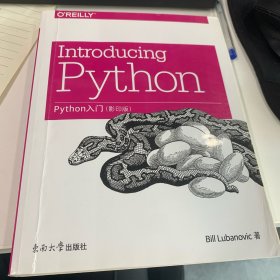
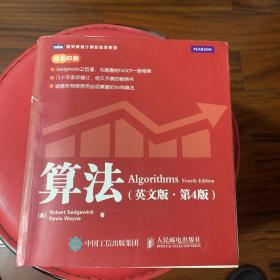

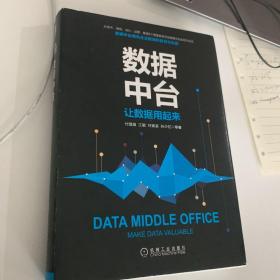
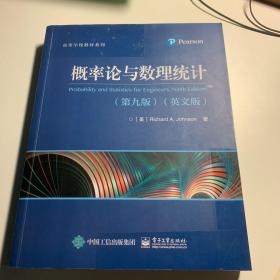

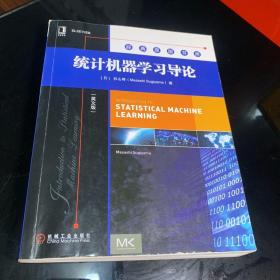




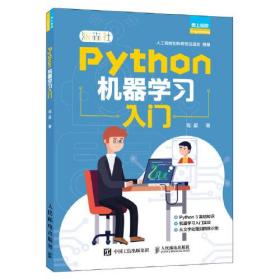



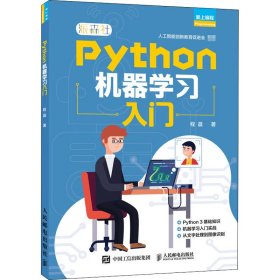
以下为对购买帮助不大的评价